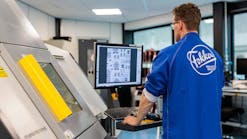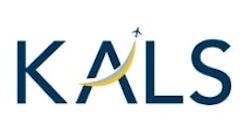Nov. 26--Asmall Albuquerque software company is on the cutting edge of a global transformation in the way pilots and airline personnel monitor planes and flights.
Ultramain Systems Inc. has built a wireless software system for pilots and ground maintenance workers to digitally log all technical issues before, during and after flights, and then mutually share that information real time while planes are in the sky.
Major world airlines -- including KLM Royal Dutch, Cathay Pacific, Singapore, North American and Emirates -- have installed the software on planes in their fleet. And, last February, Ultramain announced a deal with Boeing Co., the largest U.S. manufacturer of commercial aircraft, to distribute the TechLog software to customers who use Electronic Flight Bag hardware systems on their aircraft.
"It's a big, big process change for airlines to automate their technical (cockpit) logs, cabin logs and other tracking requirements," said Ultramain President and CEO Mark McCausland. "There is tremendous interest in it worldwide, and we're at the forefront of it."
Since the dawn of the aviation industry, pilots have filled out reams of paper "tech logs" that constitute a permanent record of all servicing and maintenance on a plane. The Federal Aviation Administration requires pilots to deliver those logs at gates upon arrival. All issues documented in those records must be resolved before a plane can take off again.
Sea change coming
McCausland said the logs, which are permanently stored in warehouses for the life of every plane, are arguably the most regulated piece of paper in commercial aviation.
"It takes a long time to change processes used in aviation since its beginning," he said. "A big tsunami is coming in this area, but it's embryonic. We're just beginning to see the changeout taking place."
Ultramain is one of a number of firms in New Mexico that are gaining national and international recognition as trailblazers in emerging aviation and aerospace technology.
Aspen Avionics, another homegrown Albuquerque firm, is gaining traction as a leader in creating digital flight displays for general aviation aircraft to replace analog systems with modern cockpit panels at an affordable price.
The now-defunct Eclipse Aviation also spearheaded an international race to make low-cost "very light jets," drawing a global industry spotlight on New Mexico before the firm went bankrupt in 2009. Now, Eclipse Aerospace, which bought the failed company's assets out of bankruptcy, is launching production of an upgraded version of the Eclipse jet at its facility in Albuquerque.
And Virgin Galactic, the anchor tenant at Spaceport America in southern New Mexico, is pioneering a new era in commercial spaceflight.
N.M. attracting notice
"There's a lot of great technology being leveraged and developed right here in New Mexico," said Peter Bunce, president and CEO of the General Aviation Manufacturers Association in Washington, D.C. "There's a great brain trust here. Combined with the state's phenomenal capabilities, including the Air Force, national laboratories, airspace ranges and weather, New Mexico has a real format for success in the aviation industry."
Industry recognition is generating healthy business growth.
Ultramain purchased and remodeled a 31,000-squarefoot building at 8100 Lang NE in Journal Center this summer for $3 million. The company, located since 2001 at a leased space at Masthead and Jefferson, outgrew its old facility after slowly expanding there from 8,000 to 13,000 square feet, McCausland said.
The company grew from 82 employees last March to 109 today. About 75 percent of those people work in Albuquerque, but the company also has offices in the U.K. and Hong Kong. And, in May, it opened a research and development office in India with 30 employees.
Exports account for about 80 percent of Ultramain's annual revenue. The company, which launched 30 years ago, was named as the Small Business Administration's 2007 New Mexico Small Business Exporter of the Year.
The company reached $10 million in revenue in 2002, but it hasn't publicly disclosed sales since then.
Double-digit growth
"We've had doubledigit revenue growth for years, and we continue to invest about 25 percent of revenues into research and development," McCausland said.
Aspen Avionics is also experiencing substantial growth. That company has received about $43 million in venture capital since launching in 2004, including a $12.8 million investment in October. It topped this year's Flying 40 list of fast-growing New Mexico companies with under $10 million in revenue. Sales rose from $10 million in 2009 and 2010 to $11.44 million in 2011, and President and CEO John Uczekaj projects at least $15 million this year.
The company attributes its success to being the first to design and market affordable digital or "glass" cockpits" to allow general aviation aircraft owners to avoid expensive overhauls of analog avionics.
"We came up with the idea for drop-in replacements," Uczekaj said. "Before we came along, to change the system, aircraft owners had to rip the whole thing out and replace it. That's not the case anymore."
Aspen also uses a novel business approach of partnering with other aviation firms to develop products, which is somewhat unique in the industry. The company is jointly designing, for example, a GPS navigation system for general aviation with avionics firm Bendix/King, which last spring relocated its headquarters from Kansas to Albuquerque.
Platform tech
Perhaps most important, both Aspen and Ultramain have created platform technologies that they can continue to build on to grow their markets.
Since launching its digital, multifunctional flight display, Aspen has added many new features for upgrades, plus new products, such as the GPS navigator under development with Bendix/King, and a device to connect digital cockpits with mobile devices.
"About 5,000 planes are now flying with our retrofit panels, but globally, there are about 200,000 Class I to Class III general aviation aircraft," said vice president of marketing Brad Hayden. "There are still quite a few planes out there to retrofit."
Ultramain, meanwhile, has barely scraped the surface with its cockpit and cabin log software, which it began developing and marketing in 2007. Most company revenue still comes from its traditional maintenance and logistics software, which Ultramain first developed in the 1980s, to monitor and plan for the upkeep and repair of vehicles, facilities and assets.
That leaves a lot of room for growth as TechLog and other Electronic Flight Bag software gain ground in the industry, McCausland said.
Copyright 2012 - Albuquerque Journal, N.M.




